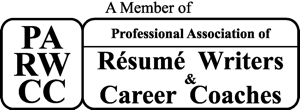iStockphoto.com | Dilen_ua
Life happens. And this often means taking several years out of the workforce at the prime of our career to have and raise children, care for infirm relatives, or take care of other personal matters. Returning to work after a gap in employment is difficult, and there are hurdles to overcome. These include unfortunate perceptions by employers that your skills may be rusty or out-of-date.
The good news is that many professionals – including those who have been out of the work force for a significant period of time – rejoin the professional working world every day. While you can’t just walk into your old office, flip the light switch on, and pick up where you left off, by anticipating the most common obstacles and objections you can facilitate your way back into the workforce.
Tip #1: Don’t make excuses for the time spent outside the work force. Perhaps you were the stay-at-home parent and were responsible for home schooling the kids. Or your parents needed to move in with you and you needed some time to get them settled. Own the situation, and don’t make apologies. In an interview, explain briefly how you spent your time, then move on to how you can help an employer achieve their best.
Tip #2: Perform a clear assessment of what you want to do and where you want to go. The transition will likely be smoother if you intend to go back into the same line of work as you were performing before. Making a career switch to a new discipline is, in itself, tricky and risky, and doing so after being out of the work force can be even more so and may involve finding an entry-level role to do so.
Tip #3: Update Your Resume, and Fill the Gap. If you left your profession to be a full-time parent, account for your time with the job title of “Full Time Parent” – no need to elaborate further. Also, you may be surprised how many activities you’ve been performing that are considered work, and you should detail these on your resume. Examples include volunteering on your child’s PTA, holding a board-level role with a nonprofit, an officer role on your homeowner’s association, service as coaching for your kid’s team, or running a side business to generate extra income. These all demonstrate professional and leadership skills.
Tip #4: Modernize Your Resume. Styles change with time, and resumes are no exception. Modernizing your resume can mean everything from the font to formatting, structure, and tone. In the recruitment world, the most recent trend is toward punch, bold accomplishments-driven resumes that feature your accomplishments in short, easy-to-scan bullet points. You’ll want to ensure that your resume meets the current expectations of recruiters and hiring managers. Do your research, and make sure that it’s as “Applicant Tracking System” friendly as possible – learn more here.
Tip #5: Modernize your Skill Set. There are many low-cost resources that can help you get up to speed on the current technical skills and software of your trade. Take advantage of free or cheap online resources such as LinkedIn Learning, Udemy, edX. And don’t forget about your alma mater – many colleges offer low-cost or free courses to their alumni. It also never hurts to modernize your skills in Microsoft Office – Word, Excel, and PowerPoint; it’s still a global standard.
Tip #6: Research, Network, Repeat. How do you learn what is in demand in the current job market, or what new skills will help you make the leap back in the workforce? Job postings use a secret language that, when deciphered, reveal the type of individuals and skill sets employers desire most. Spend time browsing the job boards to see what tools and skills are sought by employers. Call on people in your professional network to get their perspective about new trends in your field, or to learn about potential job openings or other professional career opportunities. For the most part, people are happy to help.
Tip #7: Calibrate your Salary Expectations. When are interviewing, it’s important to know the current average compensation range for your geographic area in your chosen discipline – salary site Paysa.com is an outstanding tool for this. Prepare yourself for employers who may ask you to take a step back in your career relative to where you were before you left the workforce. When assessing offers, only you can decide what is right for you.
Tip #8: Invest in a modern wardrobe. Although that suit from 2004 may still fit, it’s recommended that you get professional attire in line with current trends. It’ll subtly reinforce to employers that you’re current with today’s business environment. And don’t forget a new pair of “interview only” shoes.
Bonus Tip: Many companies embrace the idea of seeking those who have been absent from the workforce in the form of “Returnships.” A relatively new concept, these are structured like a traditional internship, in which you relearn the business while working toward a full-time role. A recent search on job board Indeed turned up more than 100 Returnship job listings.
Philip Roufail contributed to this article.
Scott Singer is the President and Founder of Insider Career Strategies Resume Writing & Career Coaching, a firm dedicated to guiding job seekers and companies through the job search and hiring process. Insider Career Strategies provides resume writing, LinkedIn profile development, career coaching services, and outplacement services, including a free resume review. You can email Scott Singer at scott.singer@insidercs.com, or via the website, www.insidercareerstrategies.com.





